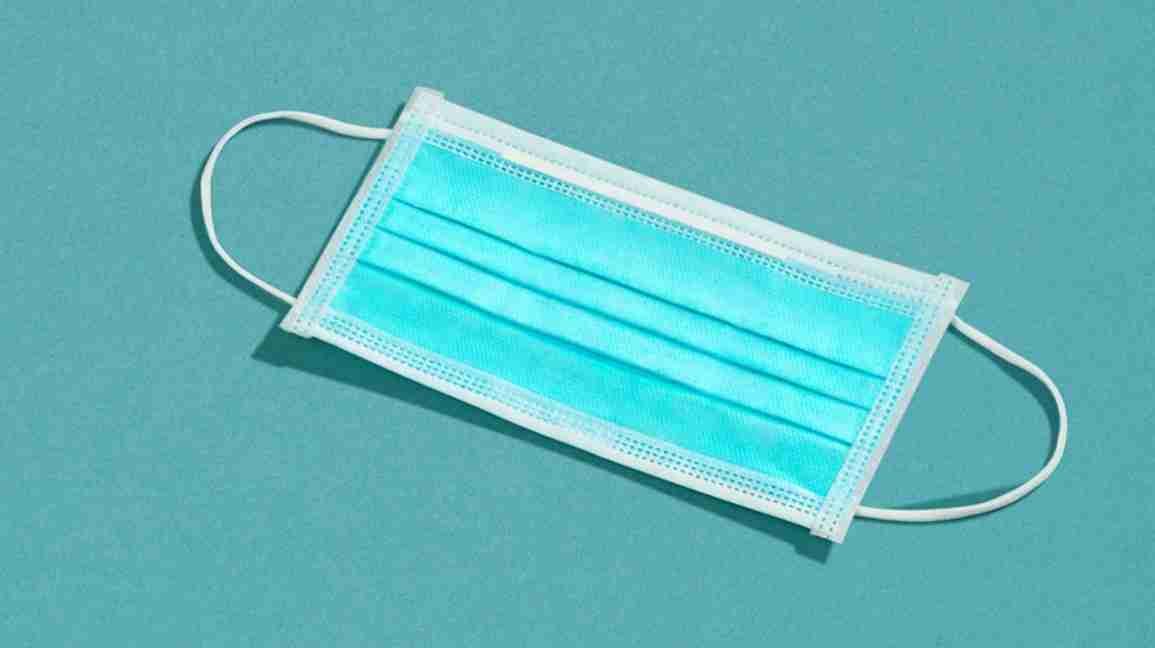In late 2019, a novel coronavirus emerged in China. Since then, it’s rapidly spread throughout the world. This novel coronavirus is called SARS-CoV-2, and the disease that it causes is called COVID-19.
While some with COVID-19 have a mild illness, others may experience difficulty breathing, pneumonia, and even respiratory failure.
Older adults and those with underlying health conditions are
You may have heard a lot recently about using face masks to prevent infection. In fact, one recent study found that Google searches related to face masks spiked in Taiwan following the country’s first imported case.
So, are face masks effective, and if so, when should you wear them? Read on to learn the answers to this question and more.
HEALTHLINE’S CORONAVIRUS COVERAGEStay informed with our live updates about the current COVID-19 outbreak.
Also, visit our coronavirus hub for more information on how to prepare, advice on prevention and treatment, and expert recommendations.
When you hear about face masks for COVID-19 prevention, it’s generally three types:
- homemade cloth face mask
- surgical mask
- N95 respirator
Let’s explore each of them in a little more detail below.
Homemade cloth face masks
To prevent the transmission of the virus from people without symptoms, the
The recommendation is for when you’re in public places where it’s difficult to maintain a 6-foot distance from others. This recommendation is in addition to continued physical distancing and proper hygiene practices.
Recommendations include:
- Wear cloth face masks in public settings, especially in areas of significant community-based transmission, such as grocery stores and pharmacies.
- Don’t put cloth face masks on children under 2 years old, people who have trouble breathing, people who are unconscious, or people who are unable to remove the mask on their own.
- Use cloth face masks rather than surgical masks or N95 respirators, as these critical supplies must be reserved for healthcare workers and other medical first responders.
- Healthcare professionals should exercise extreme caution when using homemade face masks. These masks should preferably be used in combination with a face shield that covers the entire front and sides of the face and extends to the chin or below.
NOTE: Wash homemade cloth masks after every use. When removing, be careful not to touch your eyes, nose, and mouth. Wash hands immediately after removing.
Benefits of homemade face masks
- Cloth face masks can be made at home from common materials, so there’s an unlimited supply.
- They may lower the risk of people without symptoms transmitting the virus through speaking, coughing, or sneezing.
- They’re better than not using any mask and offer some protection, especially where physical distancing is hard to maintain.
Risks of homemade face masks
- They may provide a false sense of security. While homemade face masks offer some degree of protection, they offer a lot less protection than surgical masks or respirators. One 2008 study indicated that homemade face masks may be half as effective as surgical masks and up to 50 times less effective than N95 respirators.
- They don’t replace or reduce the need for other protective measures. Proper hygiene practices and physical distancing are still the best methods of keeping yourself safe.
Surgical masks
Surgical masks are disposable, loose-fitting face masks that cover your nose, mouth, and chin. They’re typically used to:
- protect the wearer from sprays, splashes, and large-particle droplets
- prevent the transmission of potentially infectious respiratory secretions from the wearer to others
Surgical masks can vary in design, but the mask itself is often flat and rectangular in shape with pleats or folds. The top of the mask contains a metal strip that can be formed to your nose.
Elastic bands or long, straight ties help hold a surgical mask in place while you’re wearing it. These can either be looped behind your ears or tied behind your head.
N95 respirators
An N95 respirator is a more tight-fitting face mask. In addition to splashes, sprays, and large droplets, this respirator can also filter out
The respirator itself is generally circular or oval in shape and is designed to form a tight seal to your face. Elastic bands help hold it firmly to your face.
Some types may have an attachment called an exhalation valve, which can help with breathing and the buildup of heat and humidity.
N95 respirators aren’t one-size-fits-all. They actually must be fit-tested before use to make sure that a proper seal is formed. If the mask doesn’t seal effectively to your face, you won’t receive the appropriate protection.
After being fit-tested, users of N95 respirators must continue to perform a seal check each time they put one on.
It’s also important to note that a tight seal can’t be achieved in some groups. These include children and people with facial hair.
SARS-CoV-2 is transmitted from person to person via small respiratory droplets.
These are generated when a person with the virus exhales, talks, coughs, or sneezes. You can contract the virus if you breathe in these droplets.
Additionally, respiratory droplets containing the virus can land on various objects or surfaces.
It’s possible that you could acquire SARS-CoV-2 if you touch your mouth, nose, or eyes after touching a surface or object that has the virus on it. However, this is not thought to be the main way that the virus spreads
Homemade face masks
Homemade face masks only offer a small degree of protection, but they may help prevent the transmission of SARS-CoV-2 from asymptomatic people.
The CDC recommends using them in public settings, as well as practicing physical distancing and proper hygiene.
Surgical masks
Surgical masks can’t protect against infection with SARS-CoV-2. Not only does the mask not filter out smaller aerosol particles, but air leakage also occurs through the sides of the mask as you inhale.
N95 respirators
N95 respirators can protect against smaller respiratory droplets, such as those containing SARS-CoV-2.
However, the CDC currently
- N95 respirators should be fit-tested in order to be used appropriately. A poor seal can lead to leakage, lowering the respirator’s effectiveness.
- Due to their tight fit, N95 respirators can become uncomfortable and stuffy, making them difficult to wear for extended periods of time.
- Our worldwide supply of N95 respirators is limited, making it critical that healthcare workers and first responders have ready access to them.
If you already own a N-95 mask and want to wear it, that is OK as used masks cannot be donated. However, they’re more uncomfortable and harder to breathe through.
Other effective ways to prevent COVID-19
Remember that there are other effective ways besides using face masks to prevent becoming ill with COVID-19. These include:
- Cleaning your hands frequently. Use soap and water or an alcohol-based hand sanitizer.
- Practicing physical distancing. Avoid contact with people who are sick, and stay at home if there are many COVID-19 cases in your community.
- Being conscious of your face. Only touch your face or mouth with clean hands.
If you have symptoms of COVID-19, stay at home except to receive medical care. If you live with others or are visiting a healthcare provider, wear a surgical mask if one is available.
Remember that while surgical masks don’t protect against infection with SARS-CoV-2, they can help trap infectious respiratory secretions.
This can be a vital tool in helping prevent the spread of the virus to others in your surroundings.
So, how do you properly use a surgical mask? Follow the steps below:
- Clean your hands, either by washing with soap and water or by using an alcohol-based hand sanitizer.
- Before putting the mask on, inspect it for any tears or holes.
- Locate the metal strip in the mask. This is the top of the mask.
- Orient the mask so that the colored side faces outward, or away from you.
- Place the top part of the mask on the bridge of your nose, molding the metal strip to the shape of your nose.
- Carefully loop the elastic bands behind your ears or tie the long, straight ties behind your head.
- Pull the bottom of the mask down, ensuring that it covers your nose, mouth, and chin.
- Try to avoid touching the mask while you’re wearing it. If you must touch or adjust your mask, be sure to clean your hands immediately afterward.
- To take off the mask, unloop the bands from behind your ears or undo the ties from behind your head. Avoid touching the front of the mask, which may be contaminated.
- Promptly dispose of the mask in a closed garbage bin, thoroughly cleaning your hands afterward.
You can look for surgical masks at various drugstores or grocery stores. You may also be able to order them online.
Using surgical masks in the time of COVID-19
Below are some best practices to keep in mind for face masks during the COVID-19 pandemic:
- Reserve N95 respirators for use by healthcare workers and first responders.
- Only wear a surgical mask if you’re currently ill with COVID-19 or are caring for someone at home who can’t wear a mask.
- Surgical masks are disposable. Don’t reuse them.
- Replace your surgical mask if it becomes damaged or damp.
- Always promptly discard your surgical mask in a closed garbage bin after removing it.
- Clean your hands before putting your surgical mask on and after you take it off. Additionally, clean your hands if you touch the front of the mask while you’re wearing it.
If you’re caring for someone at home who has COVID-19, there are steps that you can take regarding surgical masks, gloves, and cleaning. Aim to do the following:
- Isolate them in a separate area of the home away from other people, ideally providing them with a separate bathroom as well.
- Have a supply of surgical masks that they can wear, particularly if they’re going to be around others.
- Some people with COVID-19 may not be able to wear a surgical mask, as it may make breathing harder. If this is the case,
plan to wear one when you’re helping to care for them in the same room. - Use disposable gloves
when handling soiled laundry . Throw the gloves away in a closed garbage bin after use and promptly wash your hands. - Clean your hands frequently using soap and water or an alcohol-based hand sanitizer. Try not to touch your eyes, nose, or mouth if your hands aren’t clean.
- Remember to clean high-touch surfaces daily. This includes countertops, doorknobs, and keyboards.
The CDC recommends wearing cloth face coverings, such as homemade face masks, in public settings where it’s difficult to maintain a 6-foot distance from others.
Cloth face masks should be worn while continuing to practice physical distancing and proper hygiene. Reserve surgical masks and N95 respirators for hospitals and healthcare workers.
N95 respirators can protect against contracting SARS-CoV-2 when used appropriately. People using N95 respirators need to be fit-tested to make sure the respirator seals effectively.
A surgical mask won’t protect you from contracting SARS-CoV-2. However, it can help prevent you from transmitting the virus to others.
Only wear a surgical mask if you have COVID-19 and need to be around others or if you’re caring for someone at home who can’t wear one. It’s very important that you only wear a surgical mask in the above situations.
There’s currently a shortage of surgical masks and respirators, and healthcare workers and first responders urgently need them.
If you have unused surgical face masks, you can donate them by contacting your local hospital or fire department or by checking with your state health department.

